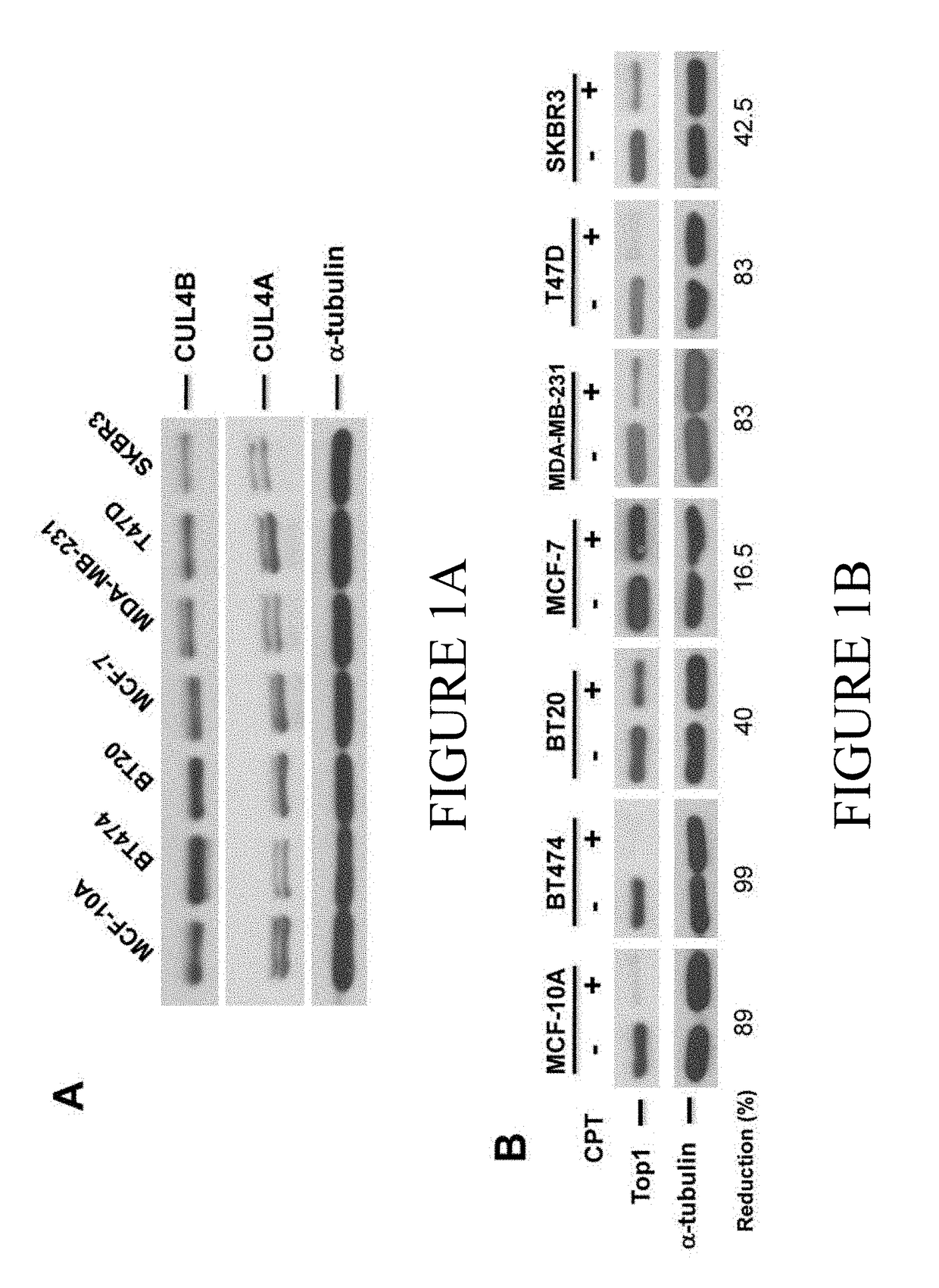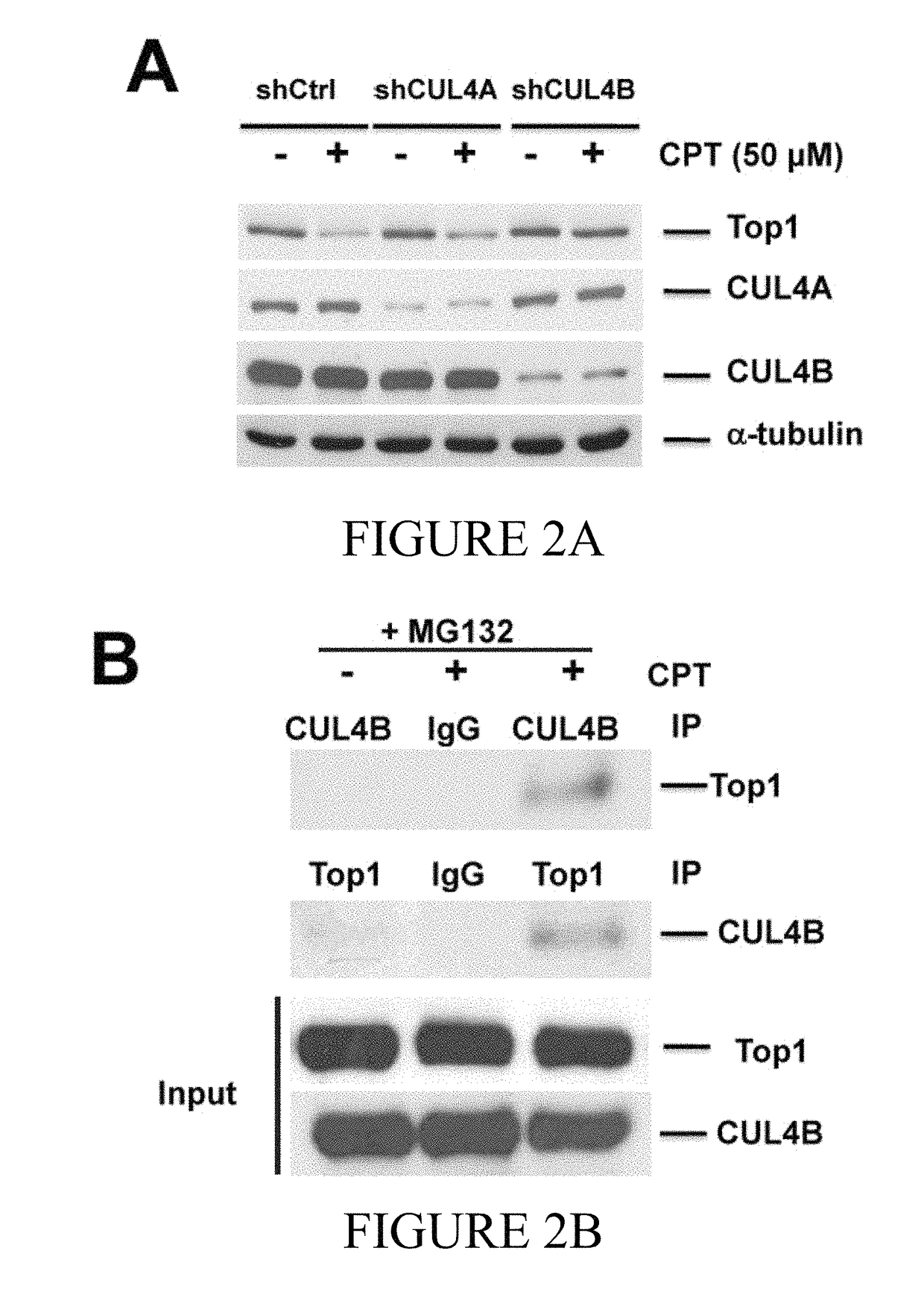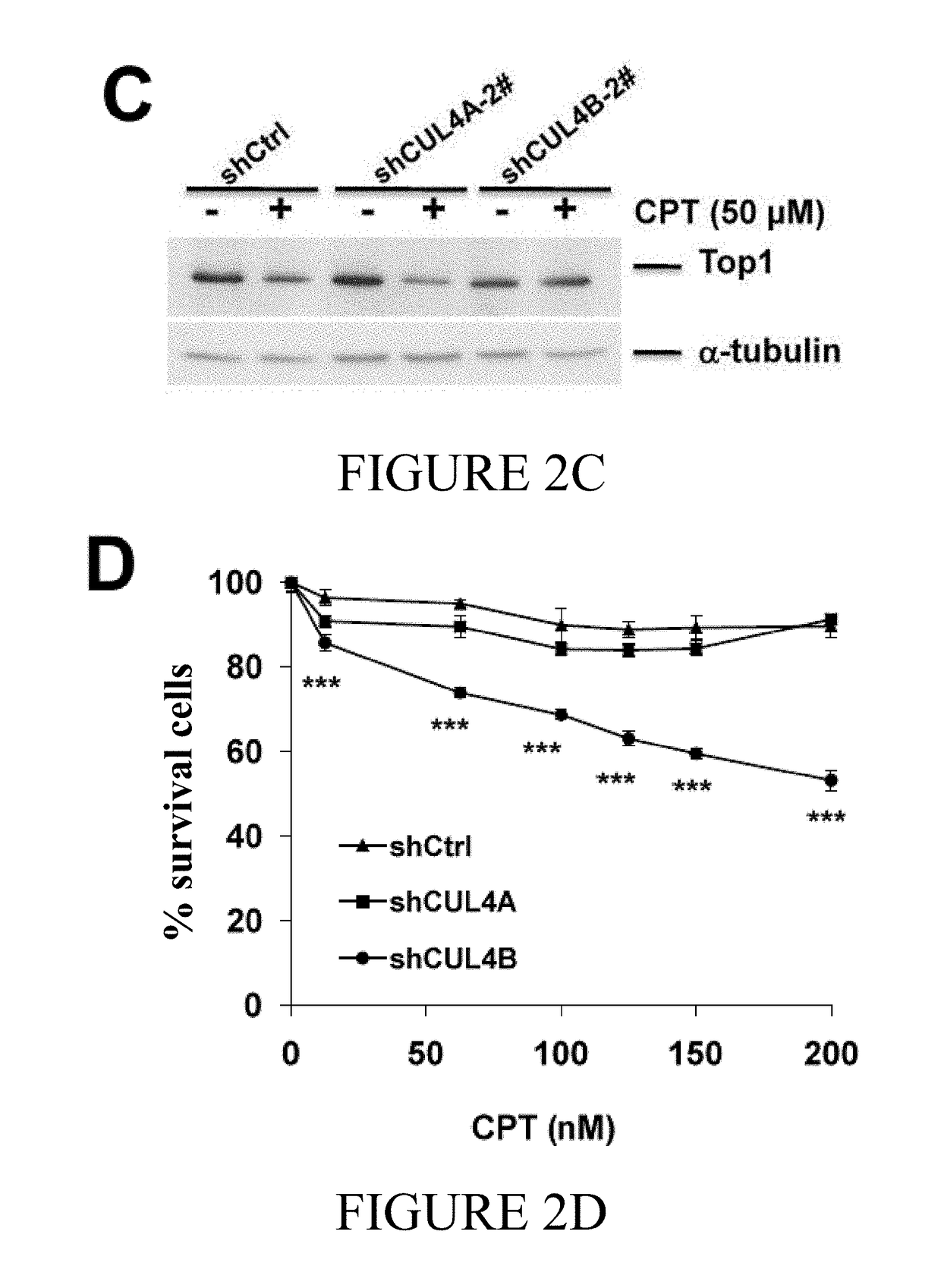CUL4B as predictive biomarker for cancer treatment
a cancer and predictive biomarker technology, applied in the field of cancer identification, treatment and characterization, can solve the problem of difficult to obtain accurate predictive biomarkers, and achieve the effect of reducing cul4b expression
- Summary
- Abstract
- Description
- Claims
- Application Information
AI Technical Summary
Benefits of technology
Problems solved by technology
Method used
Image
Examples
example 1
ression is Elevated in Cancer Tissue
[0124]Tissue microarrays were generated for 138 cases of colorectal and 185 lung cancer patient samples including 72 samples derived from subjects diagnosed with small cell lung cancer, 113 cases derived from subjects diagnosed with squamous cell carcinomas. CUL4B expression levels were measured by immunohistochemistry using a polyclonal antibody specific for CUL4B and revealed that CUL4B expression was elevated in approximately 39% of colorectal and approximately, 40% of lung cancer patients tested (36% in small cell lung cancer (26 / 72), 41.6% (47 / 113) in squamous cell lung cancer). The data also revealed that an additional 45% of the 138 colorectal samples analyzed exhibited an elevated level of CUL4B expression when compared to control however the degree of increased expression did not result in an H-score of greater than 150.
[0125]Additionally, gene copy number was analyzed in 617 cancer samples representative of 36 different types of cancer (...
example 2
encing Delays CPT-Induced TOP1 Degradation
[0129]In one aspect of the current disclosure the relative contribution of CUL4A and CUL4B E3 ligases on CPT-induced Top degradation was analyzed. Here endogenous CUL4A and / or CUL4B was knocked down in BT474 and T47D cells by the application of shRNAs via lentiviral delivery and the effect of Top1 turnover was analyzed. As shown in FIGS. 2A and 2E, CPT-induced Top1 degradation was abolished in CUL4B-silenced (CUL4Bk / d) BT474 cells while CUL4A expression remained unaltered. Further, CUL4A had no effect on Top1 degradation when compared to the control (shCtrl) (FIG. 2A). Taken together, these data indicate that CUL4B and not CUL4A mediate CPT-induced Top1 degradation in breast cancer cell lines.
example 3
ectly Interacts with Top1 Following CPT Treatment
[0130]Next, it was determined that CUL4B directly binds to Top1 resulting in Top1 ubiquitination and degradation. In order to validate the physical interaction between CUL4B and Top1, mock- or CPT-treated BT474 cells were subjected to crosslinking with formaldehyde following treatment with CPT. Total protein extracts were isolated for co-immunoprecipitation with anti-CUL4B antibody followed by immunoblotting with an anti-Top1 antibody. As shown in FIG. 2B, Top1 was co-immunoprecipitated with CUL4B in the presence of CPT. Further evidence of the direct interaction is shown by the detection of CUL4B in the immunoprecipitation fractions analyzed by application of an anti-Top1 antibody. Notably, there was no detectable interaction between Top1 and CUL4B in the absence of CPT (FIG. 2B, Left lane). Therefore, the direct interaction between CUL4B and Top1 is dependent upon CPT treatment.
PUM
| Property | Measurement | Unit |
|---|---|---|
| molecular weight | aaaaa | aaaaa |
| molecular weight | aaaaa | aaaaa |
| molecular weight | aaaaa | aaaaa |
Abstract
Description
Claims
Application Information
 Login to View More
Login to View More - R&D
- Intellectual Property
- Life Sciences
- Materials
- Tech Scout
- Unparalleled Data Quality
- Higher Quality Content
- 60% Fewer Hallucinations
Browse by: Latest US Patents, China's latest patents, Technical Efficacy Thesaurus, Application Domain, Technology Topic, Popular Technical Reports.
© 2025 PatSnap. All rights reserved.Legal|Privacy policy|Modern Slavery Act Transparency Statement|Sitemap|About US| Contact US: help@patsnap.com



